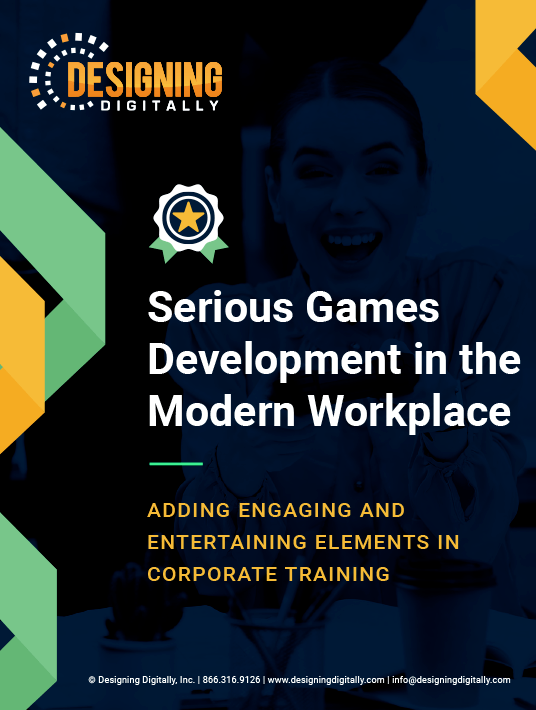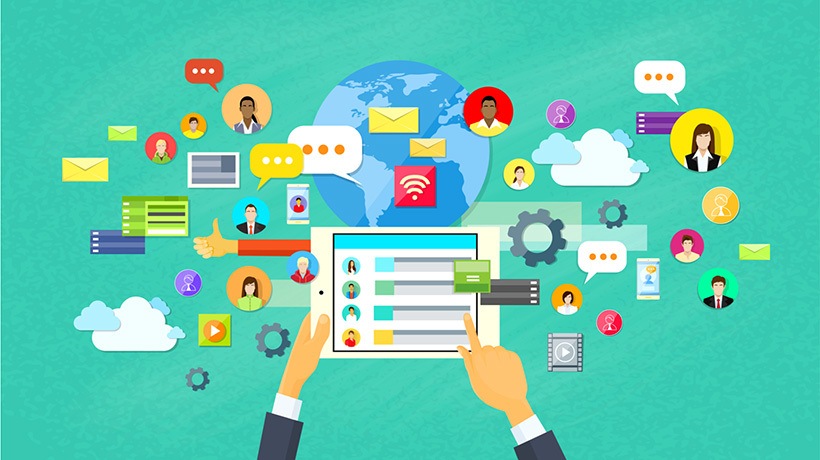Challenges Of Serious Game Development
Game-based learning, in the form of serious games, is one of the most efficient employee training methods. Many companies are adopting this style of Learning and Development into their culture and reaping the many benefits it can bring. Integrating serious games in corporate training will:
- Help employees put newly learned concepts and acquired skills into practice.
- Deeply engage players and inspire them to exceed expectations.
- Create a connection on an emotional level due to a learner-centered gaming approach.
- Break down difficult theories into easily-digestible micromodules.
- Enable employees to conquer real-world challenges by providing job-specific obstacles and situations to be solved, thus improving job performance.
- Empower employees towards objective self-assessment.
- Provide an interactive learning experience that helps keep engagement and interest high.

This is not an exhaustive list. The advantages of using serious games will be different, based on your employee learning goals and business growth objectives. However, developing a serious game comes with many challenges. Being aware of the challenges will keep you one step ahead of the curve and help you problem-solve whatever issues might arise in the process. Here is a list of 11 challenges to anticipate and circumvent.
1. Balancing The Fun Factor With Educational Value
One of the biggest challenges of serious game implementation is harmonizing how fun the game is with how educational you want it to be. Establishing learning objectives from the get-go and designing a visually appealing game can help balance things out and get you on the right path. Serious game development gets easier if you know what you want to obtain at the end of training and if you let your employees know what the learning expectations are. As they say, "Luck favors the prepared!" So, make sure you do the proper conceptualization and planning in the beginning stages.
2. Choosing The Right eLearning Platforms
Serious games can be run online or offline. You can make them available on learners’ computers, mobile devices, or Virtual Reality headsets. Each platform will offer a different gaming experience. It is important to establish your delivery platforms early on so you can tailor your development strategy around it. If your game is not VR, employees will likely enjoy the ability to access the game on multiple platforms. They will be able to engage with the learning simulation in their own time and at their own pace. This empowers learners to take charge of their own educational experience, makes them feel trusted, and increases their motivation to succeed.
3. Releasing To Learners
It can be tricky to figure out when and where to deliver your learning content to your employees without them feeling pressured into it or overwhelmed. You want your employees to grow personally and professionally but still perform their day to day tasks with accuracy. Be aware of the audience’s schedule when you initially release the game. Don’t try to build hype about it during a busy time, such as year-end or just before a conference. In addition, consider releasing levels of the game over time rather than all at once. It needs to save progress so learners can return at a later time and pick up where they left off.
4. Circumventing High Costs
There are a few options for making serious games cost-efficient. You can research low-cost or free platforms that offer a game you might adapt to your needs. The trouble with this is that off-the-shelf games might be hard to customize. You might not be able to integrate all the details of your learning strategy.
You can also create your own game from scratch. This implies a different kind of process. You need to make sure you choose the right game design company, survey your employees to find out what their personal learning objectives are, and be flexible to make changes as the game design progresses. Indeed, this implies more responsibility on your part. You'll need to prepare yourself to face many challenges along the way.
5. Figuring Out The Desired Learning Outcomes
As mentioned, knowing what skill and knowledge gaps your employees have as well as what you want the game to achieve is of utmost importance. After all, the whole point of the game is to increase employee productivity and thus lower company costs on all fronts. You can set up meetings to discuss with staff members your plan for implementing a serious game for educational purposes. You can send out surveys and questionnaires. You can even set up social media or discussion groups to help you reach certain conclusions on how the game should perform. This is basically like doing your homework. The more information you have beforehand, the better prepared you will be to create a game that can benefit employees.
6. Designing Bite-Sized Modules
Bite-sized chunks of information are always better than long and boring theory. Focusing on key concepts and breaking them down into smaller sections will help with employee knowledge retention. This will also allow employees to promptly put into practice what they have learned.
7. Creating The Right Game Environment
For employees to connect emotionally with your serious game, you'll need to create compelling narratives and put the learner at the center of the story. The game must flow seamlessly from one level to the next and provide key concepts that players can then apply in the real world. Learner skills and knowledge levels are very important here. If you give them too much, they might feel overwhelmed and get discouraged from finishing the game. Yet if you give them too little, they might not take it seriously. One way of making the game more interesting is through branching. Allowing the player to choose from a number of options will lead them down a different path and provide different lessons. Employees will feel like they have the power to choose how they respond to a certain problem or situation. You'll allow them to make mistakes and learn from them, without fixating on getting that one right answer.
8. Creating Personalized Learning Paths
Personalized learning paths go hand in hand with branching scenarios. In a sales-focused work environment, the right solution can depend on a variety of elements. The customer might have a certain attitude that needs disarming by using diplomacy skills. The product an employee is looking to sell might have a more expensive counterpart that could fit in better with the customer's needs. Thus, it is important to enable the game to create personalized learning paths based on your employees’ sales style and past experiences. There is no one-size-fits-all approach to serious gaming that can deliver the high output you're looking for.
9. Collecting Data
Using technology to train corporate employees has one serious advantage: the real-time gathering of data. In a classroom environment, the trainer might rely on quizzes and tests to gauge employee advancement. Conversely, a serious game can deliver varied and specific metrics for measuring employee skill acquisition and knowledge retention. Collecting data is essential to serious game customization. So, make sure you set up your game for gathering important data from its incipient development stages.
10. Giving Feedback
The beauty of serious game feedback is that it is instant. Pepper your game with key assessment stages so that you and your employees know how far they've come with incorporating valuable and helpful information into their daily job application.
11. Adapting The Game
If you've managed to avoid messing up the first 10 challenges of making your game successful, great! Now it's time to go through the data, analyze it, and adapt the game accordingly. There's always more room for improvement. Make sure to constantly go back and check how the players interact with the game, ask for their opinions on improving the experience, and implement the changes immediately.
Game-Based Learning Works!
Yes, it can be difficult to initiate an exemplary serious game development. You'll need to be patient and work through all the little issues that pop up. You'll need to strengthen your resolve and learn to be flexible with how things progress. Keep in mind that this is a process and you're not aiming for perfection. Rather, try to make the game effective and beneficial to your employees and business, overall. If you stay vigilant for the possible challenges you might encounter, you'll have an easier time working through them.
Serious games are an amazing tool if you know how to use them in increasing employee productivity, job performance, and job satisfaction. This all starts with sharpening your listening skills. Employees are the only ones who can help guide you towards designing a powerful game that can transform your company's Learning and Development culture. In time, the effects of using game-based learning for employee training will trickle down and reflect an increase in your bottom line. Read the eBook Serious Games Development In The Modern Workplace and learn more about the benefits that are gained with game-based learning.







